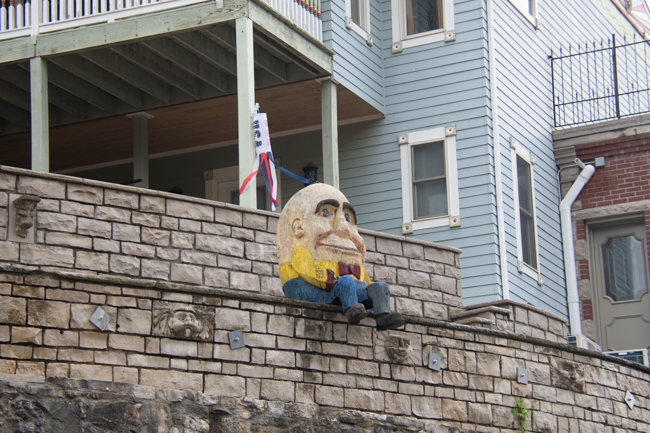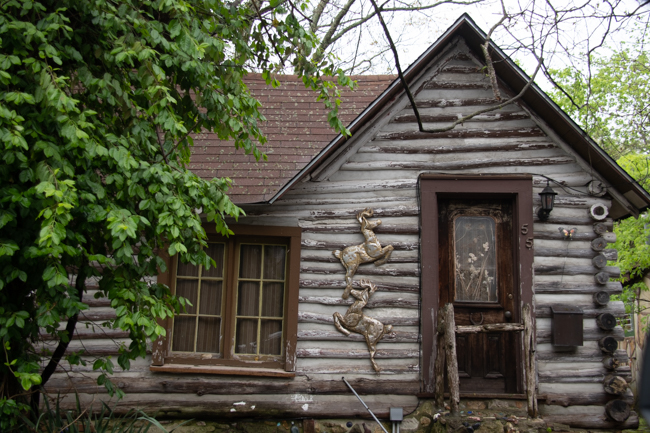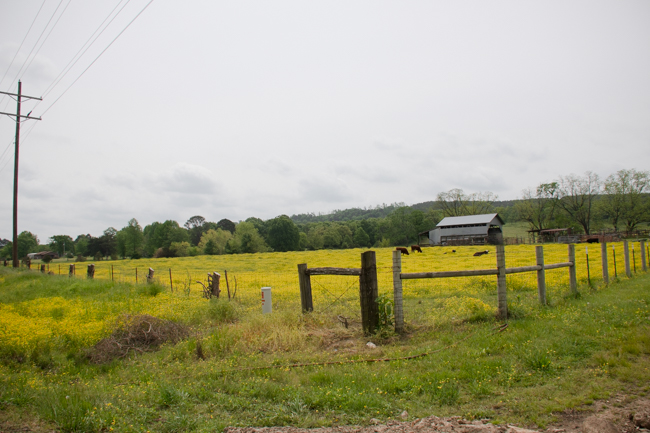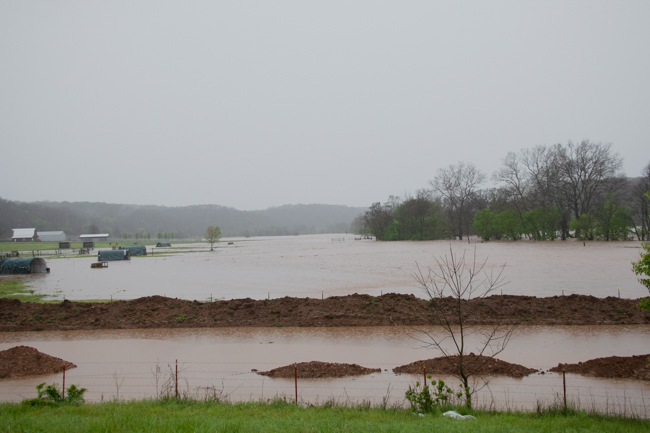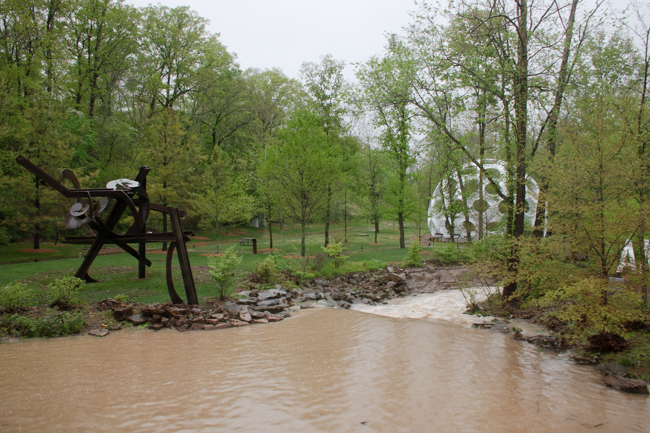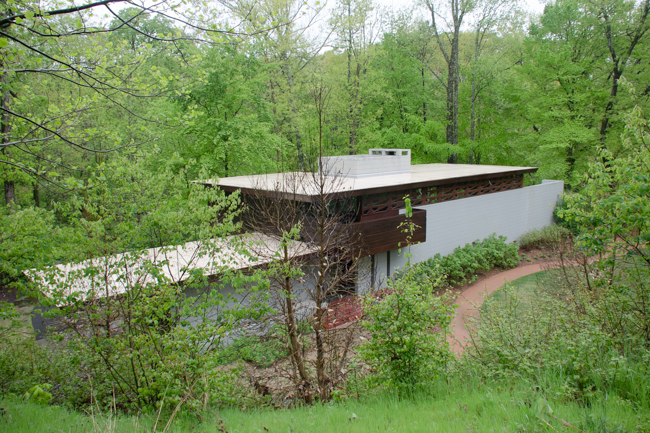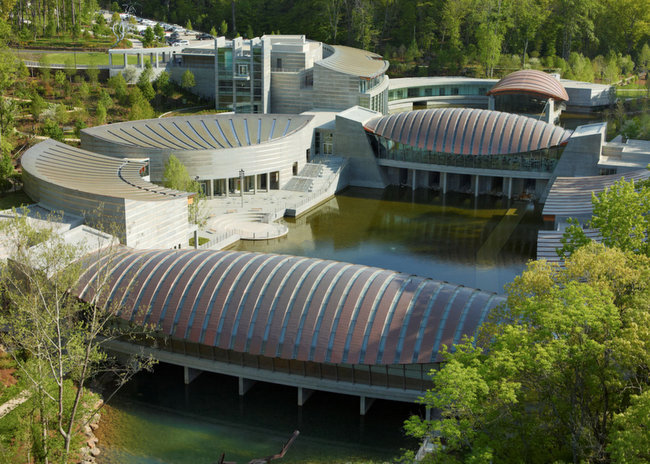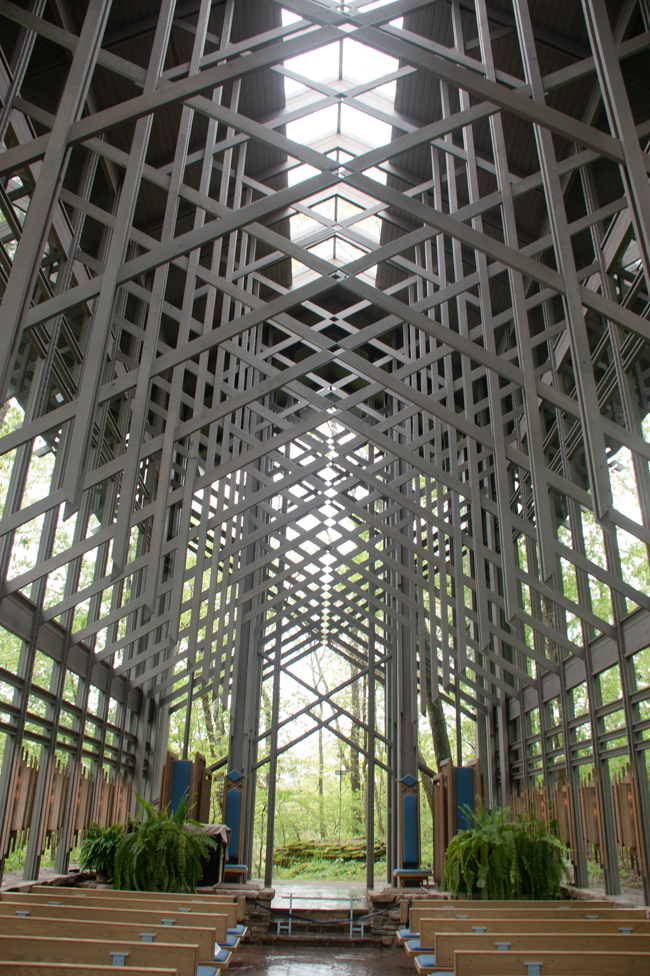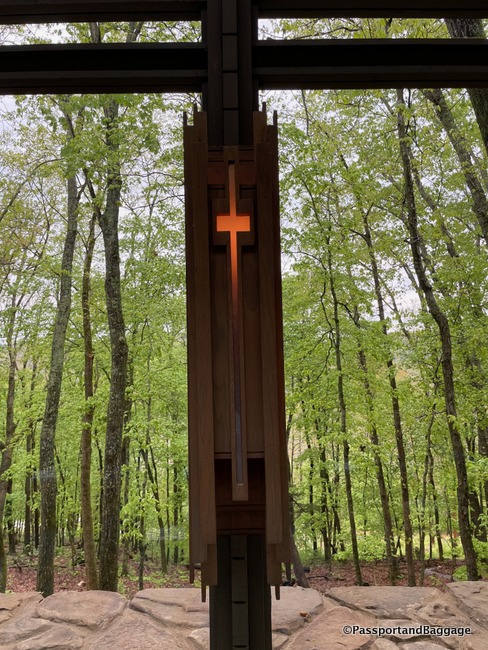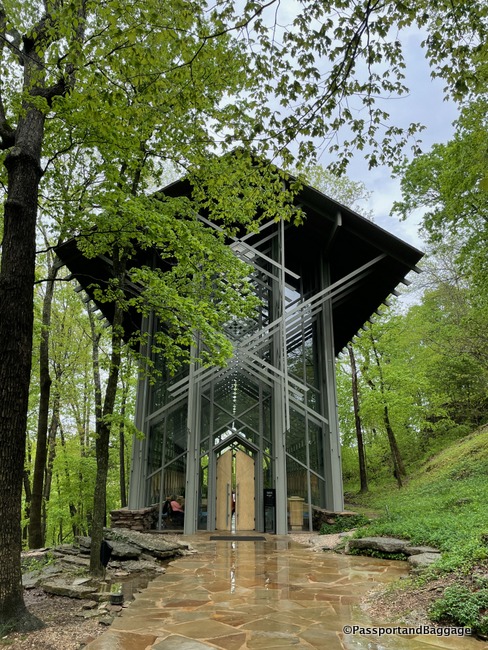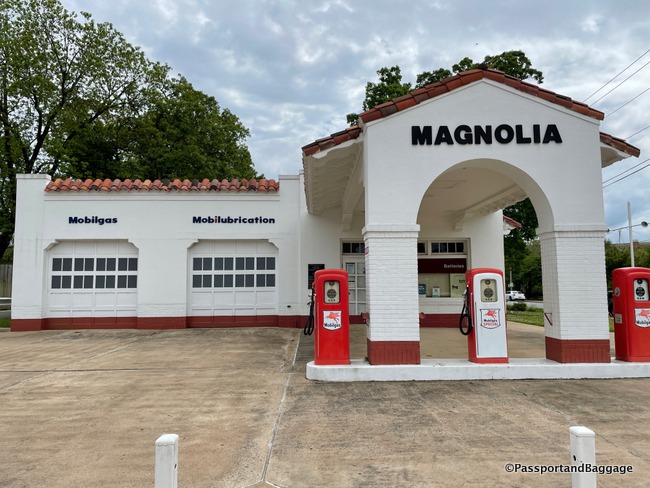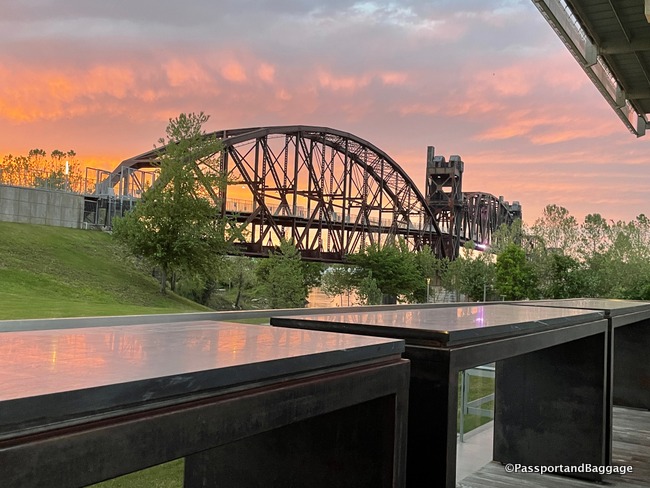Eureka Springs is an unusual town. Its architecture is primarily Victorian, and with its narrow streets and historic trains, it is a fun place to explore. Despite its charm it is filled, primarily, with tacky tourists shops.
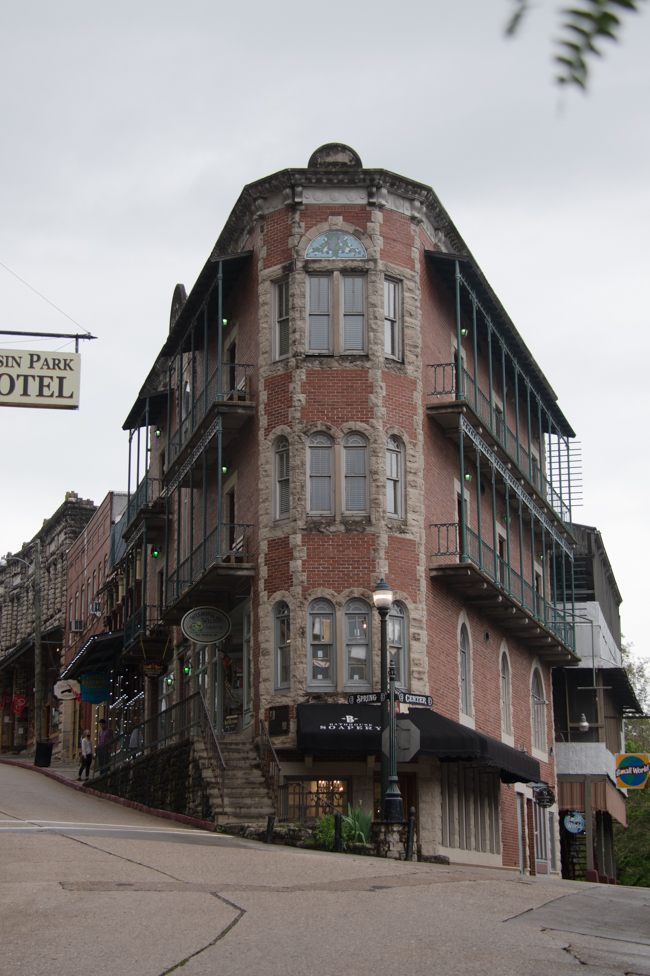
A flatiron building in Eureka Springs. The original building was built in 1880 and was destroyed by fire in 1890. Shortly after, a new building was erected and also was destroyed by fire. The current building was built in 1987.
Most everything was closed due to COVID so a walk around town was enough, we headed out of Eureka Springs to go exploring the environs.
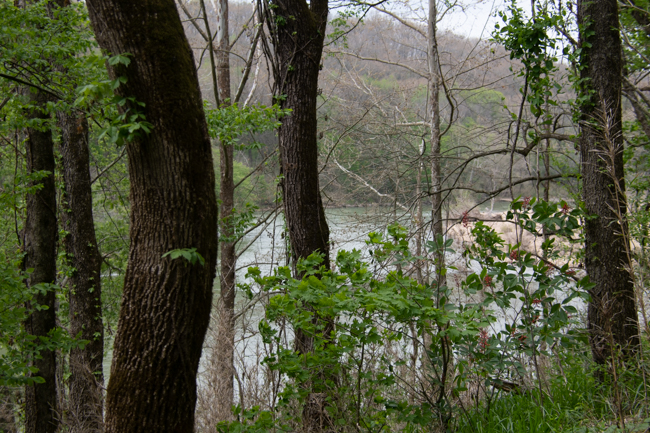
A small glimpse of the Buffalo River. The river is a National Park, to reach the water you need to hike, go by boat or bicycle
Our day to explore the Northeast of Arkansas began with a tornado warning that sent us to the basement of our hotel. The rest of the day was under flash flood warnings, we crossed many rivers overflowing their banks.
Crystal Bridges
Once on our way we headed to Crystal Bridges Museum. The rain made pictures of the place impossible, but looking out the windows was a great reminder that we were high and dry.
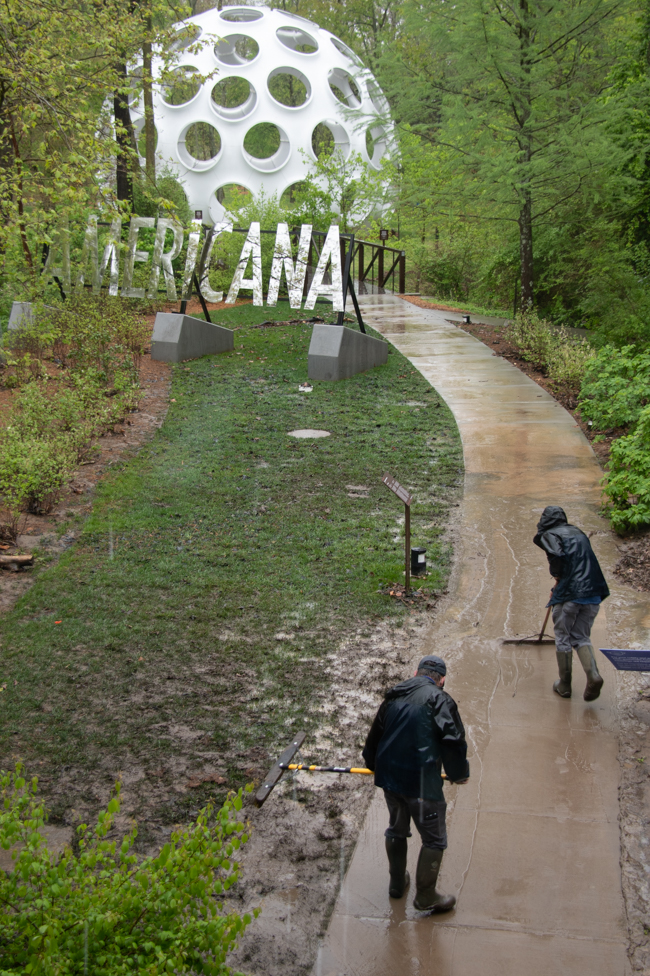
Cleaning up after flash floods at Crystal Bridges. In the back you can see Fly’s Eye Dome by Buckminster Fuller and Americana by George Sánchez-Calderón
Crystal Bridges Museum of American Art is in Bentonville, Arkansas. Founded by Alice Walton of Walmart, the museum opened November of 2011.
The museum, designed by Moshe Safdie and engineered by Buro Happold, is made of glass-and-wood and features a series of pavilions nestled around two creek-fed ponds..
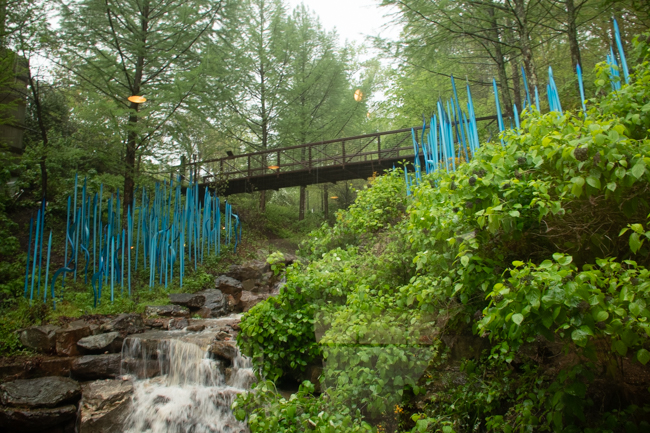
Gilhuly at Crystal Bridges
Thorncrown Chapel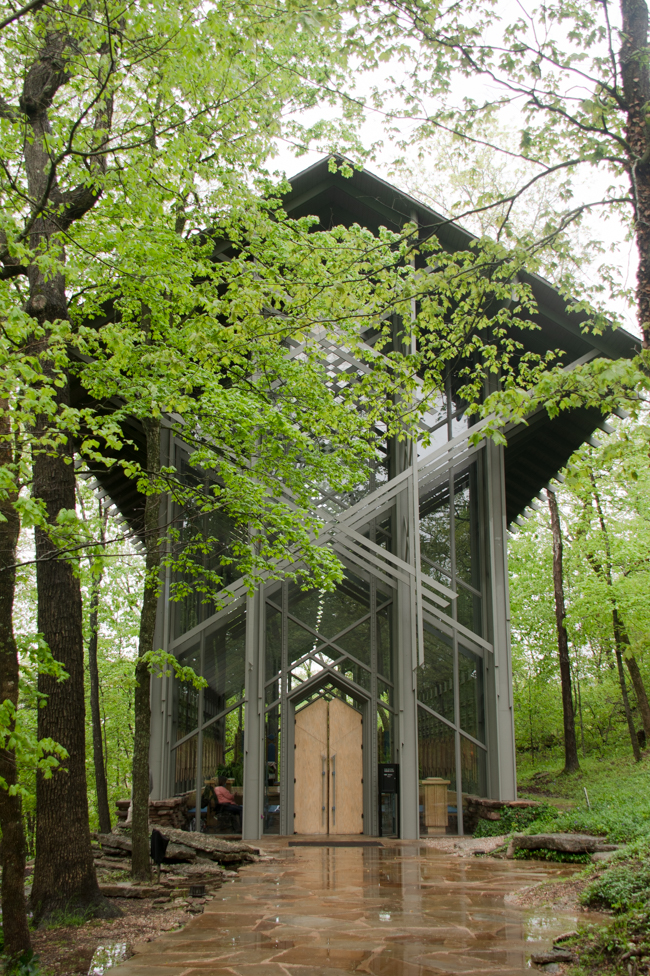
Sitting quietly in Thorncrown Chapel simply brought me to tears.
Thorncrown Chapel was designed by renowned architect E. Fay Jones. Fay was born in Pine Bluff, Arkansas in 1921. He studied at the University of Arkansas, Rice University, the University of Oklahoma, and under his mentor Frank Lloyd Wright at the Taliesin Fellowship.
Thorncrown Chapel is worth seeking out, and if you can enjoy the chapel alone it is a very moving and wonderful experience.
Little Rock
We flew out of Little Rock giving us just enough time to visit a dear old friend and see a few sights.
Central High School was the center of racial discrimination in Little Rock. The National Parks has installed a wonderful educational center just down the block from the High School.
The formerly all-white Central High School in Little Rock, enrolled nine black students in September 1957. Their attendance at the school was a test of Brown v. Board of Education, a landmark 1954 Supreme Court ruling that declared segregation in public schools unconstitutional. On September 4, 1957, the first day of classes, Governor Orval Faubus called in the Arkansas National Guard to block the black students’ entry into the high school. Soon, President Dwight D. Eisenhower sent in federal troops to escort the Little Rock Nine into the school. It drew national attention to the civil rights movement.
Across the street from the National Park Educational Center is the Magnolia/Mobil service station. It was built in the 1920s, and has served as a gas station, a student hangout, a temporary “office” for reporters during the desegregation crisis, storage for a wholesale florist business, a National Historic Site visitor center, eventually it will be an educational center for the National Park Service.
The Arkansas River flows right through the center of Little Rock, making their bridges a focal point for visitors in the newly built waterfront park area. This is a bridge as seen from the Clinton Center and the restaurant 42 as the sun went down.
A roundup of our 2021 National Parks Road Trip
We visited:
Congaree National Park – the largest intact expanse of old growth bottom land and a UNESCO Biosphere site.
Shenandoah National Park had the first Civilian Conservation Corp camp in a National Park.
The Great Smokey Mountain National Park is the most visited National Park in the states and the most biologically diverse.
The New River Gorge National Park is the newest designated National Park
Mammoth Caves National Park is a UNESCO Biosphere site and a World Heritage Site with the world’s longest underground cave system.
Gateway Arch National Park is the smallest National Park
Hot Springs National Park is the most urban National Park
We visited 7 national parks, drove through 9 states (Arkansas, North Carolina, South Carolina, West Virginia, Virginia, Tennessee, Missouri, Kentucky and Illinois) crossed the Mississippi, Missouri and Arkansas Rivers, there were hundreds more, but those are the big ones, and we saw four mountain ranges, The Appalachia’s, The Smokies, The Shenandoah and the Ozarks.
